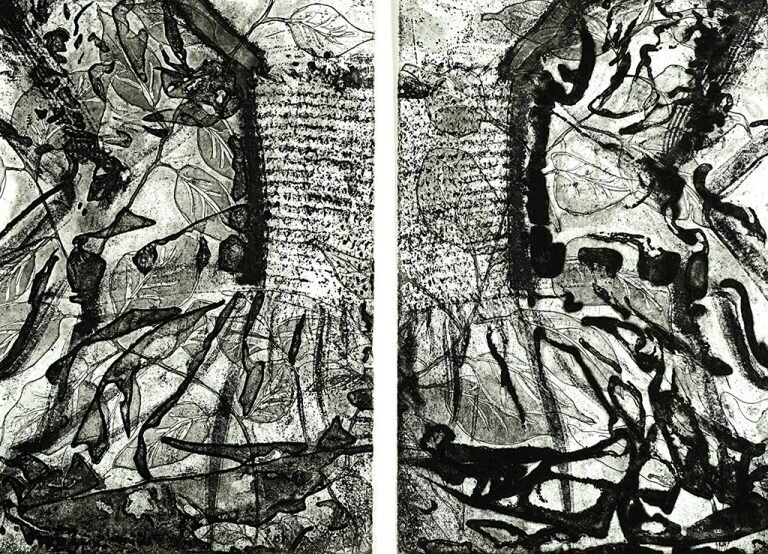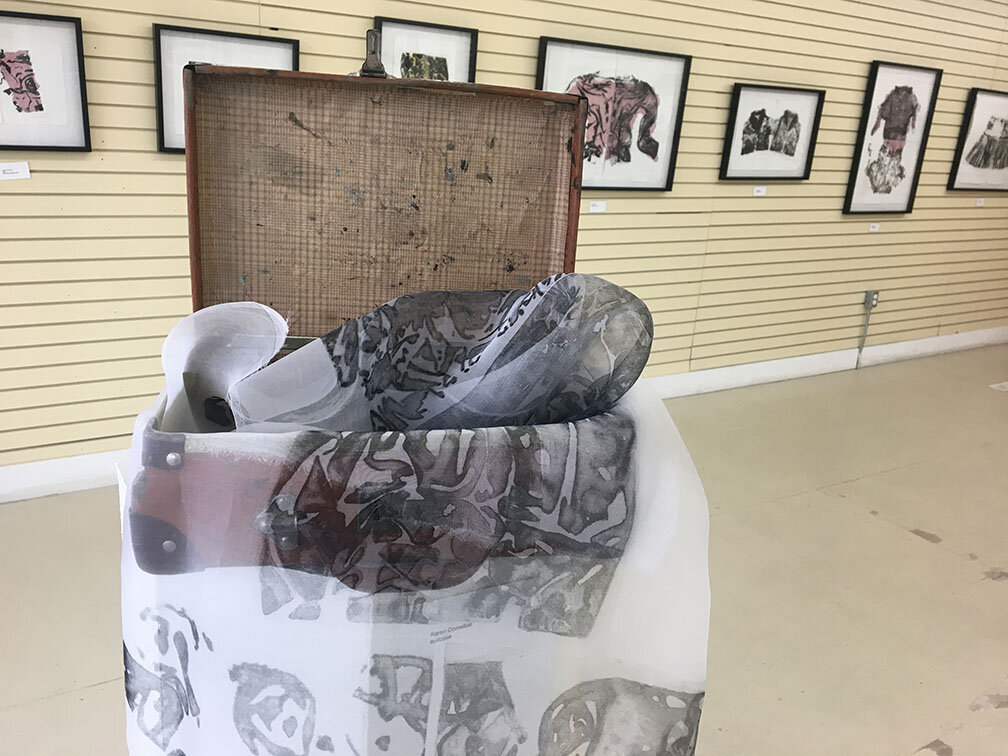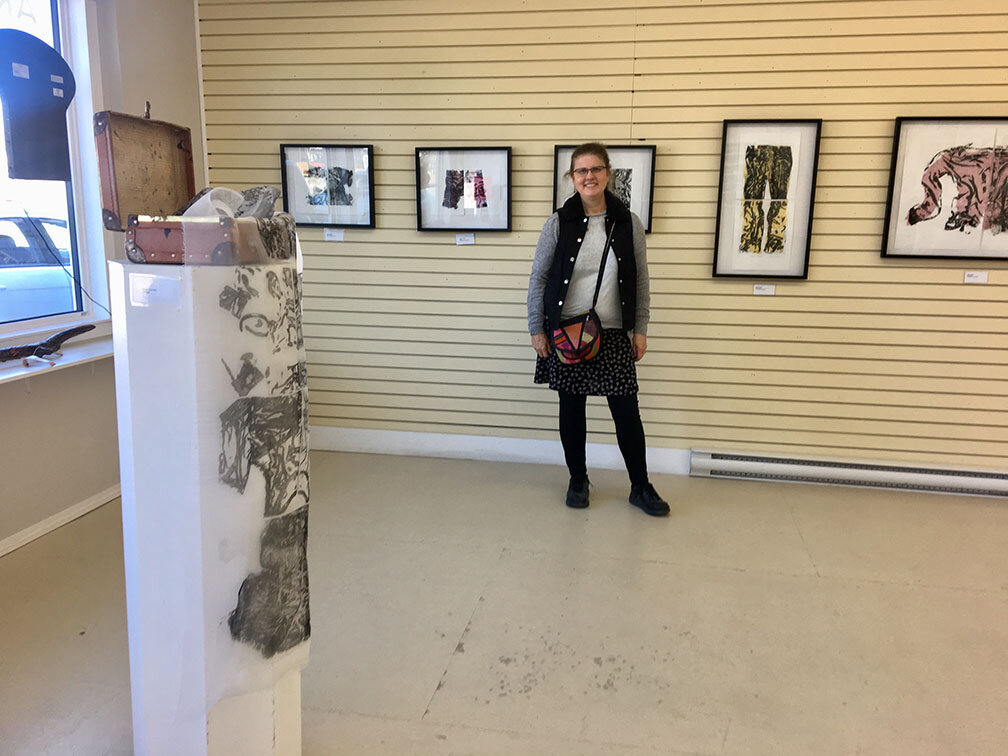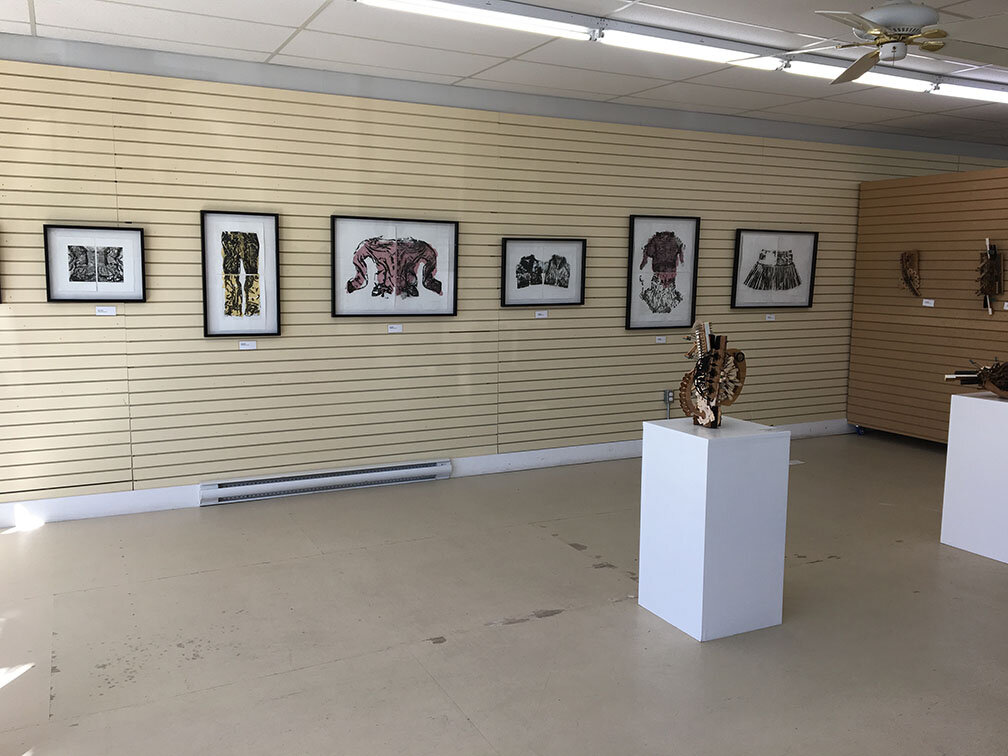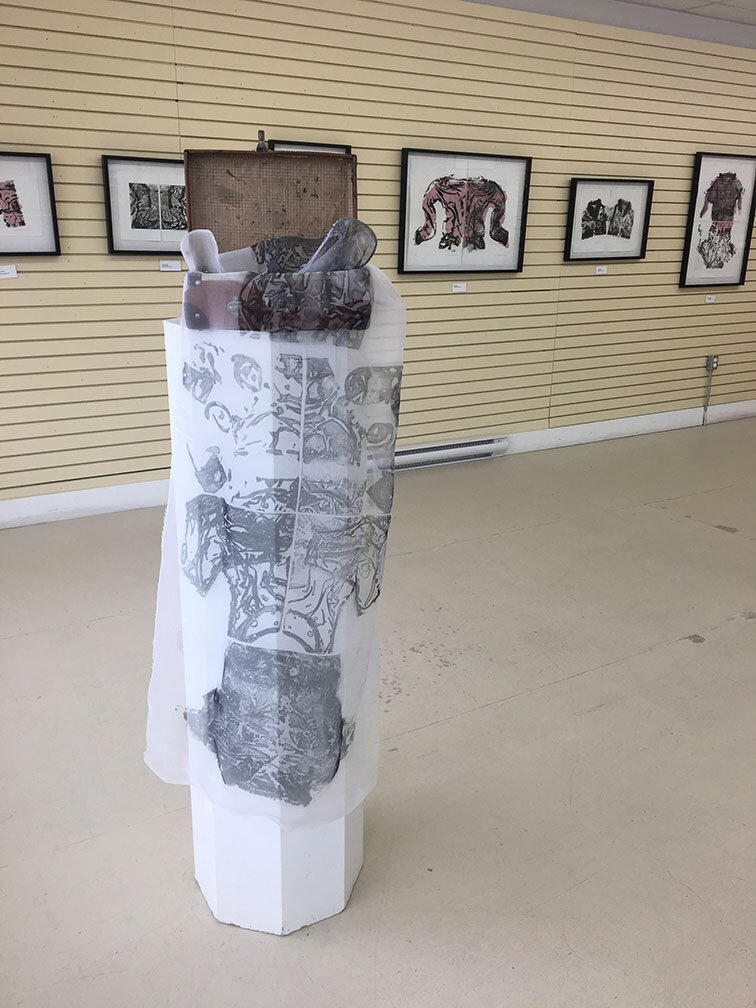Displacement
Body of Work
Displacement
Displacement probes what is physically carried with you when you are forced to leave home and the emotional and psychological baggage you bring with you in your body. The experience of involuntary displacement from a volatile, dangerous political situation was dramatic and emotional. Many people have experienced physical and emotional upheaval related to being displaced including natural disasters, economic imperatives or physical danger and insecurity. Most people have a recent memory or a family story of displacement. No journey is certain when one’s world is turned upside down, everyone carries physical and emotional baggage.
The small suitcase that Cornelius shared with her brother as young children when they had to flee the Congo became the inspiration for this series. In this work Cornelius explores those things that are physically taken with you when you leave home, and the baggage you carry in your body such as memory, familiarity, cultural identity, grief, sadness and loss.
She and her brother made difficult choices encountering conflicting emotions when compelled to decide what to take and what to leave behind when they were forced to leave home. Cornelius put her favourite doll’s clothes into the suitcase, but in the tension of the moment had to leave her doll behind. Her brother chose a number of small plastic farm animals but had to abandon his favourite metal barn that housed them. Each time they played with their treasured items they were reminded of what they had and what they had lost.
In this body of work items of clothing reminiscent of what her mother packed for her are etched into the metal plates, recording the highs and the lows, the mountains and the valleys of the experience of leaving home. The nuanced slightly out of focus, photographic like translation of the front and back of the clothing, records the physical outside and emotional inside, marking uncertainty, unpredictability, fear and trauma.
Electro-etching
Electro-etching is a process in which electrolysis is used to remove selected areas of a metal plate.
I have been researching and experimenting with electro-etching., finding new ways to use this technique to speak my conceptual ideas. I placed a piece of children’s clothing between two copper plates. I connected the positive and negative plates completing an electrical circuit. The front and back of the clothing was etched into the copper plates.
Electro-etching doesn’t produce toxic fumes and the copper sulfate electrolyte solution doesn’t degrade over time which makes this process less toxic and more environmentally responsible.





